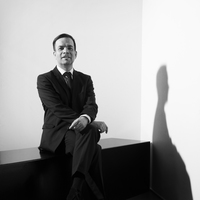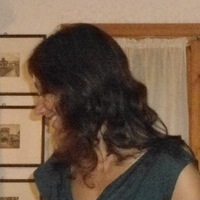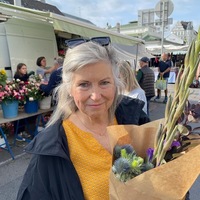
Atli M Seelow
Atli Magnus Seelow is an Architect and Architectural Historian. He is currently teaching and researching at the Institute for Art History at Friedrich-Alexander-Universität Erlangen- Nürnberg. He is also a Guest Researcher at the Royal Danish Academy for Architecture, Design, Conservation, Copenhagen. He was previously Associate Professor for History and Theory of Architecture at Chalmers University of Technology, Department of Architecture and Civil Engineering, Gothenburg.
His work focuses on the history and theory of 19th- and 20th-Century architecture. He is particularly interested in technology in modern and contemporary architecture as well as architecture in the Nordic countries.
In 2009 Atli obtained his doctorate (Doktor-Ingenieur) in Architectural History (›Baugeschichte‹) at Technische Universität München with an award-winning doctoral thesis. His thesis supervisor was Professor Dr.-Ing. Winfried Nerdinger, then Director of Architekturmuseum der Technischen Universität München, now Director of the Documentation Centre for the History of National Socialism Munich and Director of the Visual Arts section of the Bavarian Academy of Fine Arts.
In 2017 Atli acquired the qualification of Docent with venia docendi in Theory and History of Architecture at Chalmers University of Technology.
Atli is the author of three books, Die moderne Architektur in Island in der ersten Hälfte des 20. Jahrhunderts – Transferprozesse zwischen Adaption und Eigenständigkeit (›Modern architecture in Iceland in the first half of the 20th century – transfer processes between adaptation and independence‹, Verlag für moderne Kunst, Nürnberg 2011), Reconstructing the Stockholm Exhibition 1930 (Arkitektur Förlag, Stockholm 2016) and Gunnar Asplund, Wolter Gahn, Sven Markelius, Gregor Paulsson, Eskil Sundahl, Uno Åhrén: Akzeptiere. Das Buch und seine Geschichte. Deutsche Übersetzung mit Einleitung und Kommentar (FAU University Press, Erlangen 2018).
He has also published more than two dozen book chapters, peer-reviewed and popular science articles. He has contributed to a variety of architecture and art journals, such as Archi tectural Histories, Arts (Switzerland), Baumeister, Bauwelt, Detail, Deutsche Bauzeitung and Konsthistorisk Tidskrift.
Atli curated the exhibition Reconstructing the Stockholm Exhibition 1930 at the Royal Swedish Academy of Fine Arts in Stockholm (2016) and participated i.a. in the exhibition Sagenhaftes Island – Fabulous Iceland at the Frankfurt Book Fair (2011). He is co-founder of the research group Between nation and globalization. Reflections on identity in media, art and archi tecture (›Zwischen Nation und Globalisierung. Reflexionen von Identität in Medien, Kunst und Architektur‹) at the Interdisciplinary Media Studies Center, Friedrich-Alexander-University Erlangen-Nürnberg.
He has received numerous awards and grants, i.a. the Marshall Award (Werner Konrad Marschall und Dr.-Ing. Horst Karl Marschall Stiftung), grants from the Icelandic State Architect’s Fund (›Minningarsjóður Guðjóns Samúelssonar‹) and the Icelandic Preservation Fund (›Húsafriðunarsjóður ríkisins‹).
His work has received funding from the Strong Research Environment »Architecture in the Making. Architecture as a Making Discipline and Material Practice« in Sweden and Volkswagen Stiftung. His book Die moderne Architektur in Island in der ersten Hälfte des 20. Jahrhunderts was nominated by Deutsche Stiftung Buchkunst for Die schönsten Deutschen Bücher and commended by Deutsche Gesellschaft für Photographie.
His work focuses on the history and theory of 19th- and 20th-Century architecture. He is particularly interested in technology in modern and contemporary architecture as well as architecture in the Nordic countries.
In 2009 Atli obtained his doctorate (Doktor-Ingenieur) in Architectural History (›Baugeschichte‹) at Technische Universität München with an award-winning doctoral thesis. His thesis supervisor was Professor Dr.-Ing. Winfried Nerdinger, then Director of Architekturmuseum der Technischen Universität München, now Director of the Documentation Centre for the History of National Socialism Munich and Director of the Visual Arts section of the Bavarian Academy of Fine Arts.
In 2017 Atli acquired the qualification of Docent with venia docendi in Theory and History of Architecture at Chalmers University of Technology.
Atli is the author of three books, Die moderne Architektur in Island in der ersten Hälfte des 20. Jahrhunderts – Transferprozesse zwischen Adaption und Eigenständigkeit (›Modern architecture in Iceland in the first half of the 20th century – transfer processes between adaptation and independence‹, Verlag für moderne Kunst, Nürnberg 2011), Reconstructing the Stockholm Exhibition 1930 (Arkitektur Förlag, Stockholm 2016) and Gunnar Asplund, Wolter Gahn, Sven Markelius, Gregor Paulsson, Eskil Sundahl, Uno Åhrén: Akzeptiere. Das Buch und seine Geschichte. Deutsche Übersetzung mit Einleitung und Kommentar (FAU University Press, Erlangen 2018).
He has also published more than two dozen book chapters, peer-reviewed and popular science articles. He has contributed to a variety of architecture and art journals, such as Archi tectural Histories, Arts (Switzerland), Baumeister, Bauwelt, Detail, Deutsche Bauzeitung and Konsthistorisk Tidskrift.
Atli curated the exhibition Reconstructing the Stockholm Exhibition 1930 at the Royal Swedish Academy of Fine Arts in Stockholm (2016) and participated i.a. in the exhibition Sagenhaftes Island – Fabulous Iceland at the Frankfurt Book Fair (2011). He is co-founder of the research group Between nation and globalization. Reflections on identity in media, art and archi tecture (›Zwischen Nation und Globalisierung. Reflexionen von Identität in Medien, Kunst und Architektur‹) at the Interdisciplinary Media Studies Center, Friedrich-Alexander-University Erlangen-Nürnberg.
He has received numerous awards and grants, i.a. the Marshall Award (Werner Konrad Marschall und Dr.-Ing. Horst Karl Marschall Stiftung), grants from the Icelandic State Architect’s Fund (›Minningarsjóður Guðjóns Samúelssonar‹) and the Icelandic Preservation Fund (›Húsafriðunarsjóður ríkisins‹).
His work has received funding from the Strong Research Environment »Architecture in the Making. Architecture as a Making Discipline and Material Practice« in Sweden and Volkswagen Stiftung. His book Die moderne Architektur in Island in der ersten Hälfte des 20. Jahrhunderts was nominated by Deutsche Stiftung Buchkunst for Die schönsten Deutschen Bücher and commended by Deutsche Gesellschaft für Photographie.
less
Related Authors
gabriella cianciolo
Universität zu Köln
Giovanna Targia
University of Zurich, Switzerland
Börries Kuzmany
University of Vienna
Johannes Feichtinger
Austrian Academy of Sciences
Diana Reynolds-Cordileone
Point Loma Nazarene University
InterestsView All (9)






Uploads
Books by Atli M Seelow
Arkís strives to create architecture that stems from and resonates with the magnificent Icelandic landscape. This means that their buildings help tying things together, rather than stand out as individual objects. In Arkís buildings, there is thus a clear link with Nordic tradition in terms of them being deter- mined by a combination of context and function. They base their work on the affordances of the sites and design their buildings in accordance with the brief.
This book presents a selection of their most important projects, such as Reykjavík University, Apotek Hotel, and Snæfellsstofa Visitor Centre.
It also includes texts by Sigríður Magnúsdóttir, Atli Magnus Seelow and Livio Dimitriu, as well as an interview with representatives of the studio by the editor Tomas Lauri.
Modernism in the Nordic countries is — different from its countries of origin, the Netherlands, France, Germany or the Soviet Union — less the result of revolutionary upheaval after World War I, but the result of a gradual evolution of a protomodern Nordic Classicism, on the one hand, and the reception of modernism from the European continent and its transfer to the North, on the other. The Stockholm Exhibition 1930, Arts and Crafts and Home Industries (Stockholmsutställningen 1930 av konstindustri, konsthantverk och hemslöjd), organised by the Swedish Arts and Crafts Society (Svenska Slöjdföreningen) plays a special role in this context. The various tendencies were fused into a synthesis by this exhibition. Its comprehensive approach and phenomenal success not only contributed greatly to the emergence of modernism in Sweden, but in other Nordic countries as well.
Die Moderne in den nordischen Ländern ist – anders als in ihren Ursprungsländern, den Niederlanden, Frankreich, Deutschland oder der Sowjetunion – nicht das Ergebnis eines revolutionären Umbruchs nach dem Ersten Weltkrieg. Vielmehr ist sie zum einen die Folge einer graduellen Weiterentwicklung eines protomodernen nordischen Klassizismus; zum anderen geht sie auf die Rezeption der Moderne auf dem europäischen Kontinent und ihren Transfer in den Norden zurück. Eine besondere Bedeutung kommt hierbei der "Stockholmer Ausstellung 1930. Kunstgewerbe, Bauen und Wohnen" ("Stockholmsutställningen 1930 av konstindustri, konsthantverk och hemslöjd") zu, die vom Schwedischen Kunstgewerbeverband (Svenska Slöjdföreningen) organisiert wurde. Durch sie wurden die verschiedenen Bemühungen zu einer Synthese gebündelt, und sie trug wegen ihres umfassenden Anspruchs und ihres phänomenalen Erfolgs nicht nur in Schweden, sondern auch in den anderen nordischen Ländern wesentlich zum Durchbruch der Moderne bei.
This book makes the text of the Acceptera-Manifesto accessible to the interested reader in German for the first time. In addition, the history of the book is investigated: the various movements and developments that contribute to the Stockholm exhibition and the publication of Acceptera are examined; the reception and impact of the book are also taken into account. Finally, this edition is extensively annotated and its design follows the Swedish original from 1931 as it constitutes an integral part of the book.
Full text available:
http://opus4.kobv.de/opus4-fau/frontdoor/index/index/docId/10383
It is part of an anthology edited by Sandra Rühr and Eva Wattolik that reflects from the perspective of media science on the different variations of the celebratory as well as their perception.
It includes contributions from history, literature studies, art history, theater as well as media studies and opens up interdisciplinary and multiperspective possibilities for further research.
The Stockholm Exhibition is a phenomenal success and attracts more than four million visitors, including 25000 foreign guests.
Despite its enormous success the architecture of the Stockholm Exhibition has been studied surprisingly little in detail and its buildings are astonishingly poorly documented.
In order to reconstruct its architecture, rediscover its qualities and bring it to life, in 2014 and 2015 master students of Chalmers Department of Architecture undertook to reconstruct the pavilions in the form of models.
The reconstruction led to a series of discoveries testifying to an architectural quality that cannot be discerned from pictures or drawings, but is documented in this volume. Through the construction of the models of the pavilions of the Stockholm Exhibition, the quality of an architecture, which for over 80 years nobody had seen, could be reconstructed and re-experienced — an architecture which proved to be so important for the culture of modernism in the Nordic countries.
Papers by Atli M Seelow
Der folgende Beitrag stellt anhand einiger Beispiele die Entstehung und Entwicklung des Kleinwohnhauses als Bautypus dar und betrachtet im Querschnitt, welche Akteur*innen beziehungsweise Einflüsse dazu beitrugen und welche Bilder oder Motive evoziert beziehungsweise welche Vorstellungen von Regionalität beziehungsweise regionaler oder nationaler Identität konstruiert wurden. Die Untersuchung geht von der These aus, dass den verschiedenen Ausprägungen des Kleinwohnhauses – trotz oftmals vergleichbarer Formensprache – unterschiedliche Motive und Absichten zugrunde lagen und Facetten des Vernakulären, Ländlichen oder Historischen auf verschiedene Art und Weise zur Konstruktion von regionalen oder nationalen Identitäten eingesetzt wurden.
Arkís strives to create architecture that stems from and resonates with the magnificent Icelandic landscape. This means that their buildings help tying things together, rather than stand out as individual objects. In Arkís buildings, there is thus a clear link with Nordic tradition in terms of them being deter- mined by a combination of context and function. They base their work on the affordances of the sites and design their buildings in accordance with the brief.
This book presents a selection of their most important projects, such as Reykjavík University, Apotek Hotel, and Snæfellsstofa Visitor Centre.
It also includes texts by Sigríður Magnúsdóttir, Atli Magnus Seelow and Livio Dimitriu, as well as an interview with representatives of the studio by the editor Tomas Lauri.
Modernism in the Nordic countries is — different from its countries of origin, the Netherlands, France, Germany or the Soviet Union — less the result of revolutionary upheaval after World War I, but the result of a gradual evolution of a protomodern Nordic Classicism, on the one hand, and the reception of modernism from the European continent and its transfer to the North, on the other. The Stockholm Exhibition 1930, Arts and Crafts and Home Industries (Stockholmsutställningen 1930 av konstindustri, konsthantverk och hemslöjd), organised by the Swedish Arts and Crafts Society (Svenska Slöjdföreningen) plays a special role in this context. The various tendencies were fused into a synthesis by this exhibition. Its comprehensive approach and phenomenal success not only contributed greatly to the emergence of modernism in Sweden, but in other Nordic countries as well.
Die Moderne in den nordischen Ländern ist – anders als in ihren Ursprungsländern, den Niederlanden, Frankreich, Deutschland oder der Sowjetunion – nicht das Ergebnis eines revolutionären Umbruchs nach dem Ersten Weltkrieg. Vielmehr ist sie zum einen die Folge einer graduellen Weiterentwicklung eines protomodernen nordischen Klassizismus; zum anderen geht sie auf die Rezeption der Moderne auf dem europäischen Kontinent und ihren Transfer in den Norden zurück. Eine besondere Bedeutung kommt hierbei der "Stockholmer Ausstellung 1930. Kunstgewerbe, Bauen und Wohnen" ("Stockholmsutställningen 1930 av konstindustri, konsthantverk och hemslöjd") zu, die vom Schwedischen Kunstgewerbeverband (Svenska Slöjdföreningen) organisiert wurde. Durch sie wurden die verschiedenen Bemühungen zu einer Synthese gebündelt, und sie trug wegen ihres umfassenden Anspruchs und ihres phänomenalen Erfolgs nicht nur in Schweden, sondern auch in den anderen nordischen Ländern wesentlich zum Durchbruch der Moderne bei.
This book makes the text of the Acceptera-Manifesto accessible to the interested reader in German for the first time. In addition, the history of the book is investigated: the various movements and developments that contribute to the Stockholm exhibition and the publication of Acceptera are examined; the reception and impact of the book are also taken into account. Finally, this edition is extensively annotated and its design follows the Swedish original from 1931 as it constitutes an integral part of the book.
Full text available:
http://opus4.kobv.de/opus4-fau/frontdoor/index/index/docId/10383
It is part of an anthology edited by Sandra Rühr and Eva Wattolik that reflects from the perspective of media science on the different variations of the celebratory as well as their perception.
It includes contributions from history, literature studies, art history, theater as well as media studies and opens up interdisciplinary and multiperspective possibilities for further research.
The Stockholm Exhibition is a phenomenal success and attracts more than four million visitors, including 25000 foreign guests.
Despite its enormous success the architecture of the Stockholm Exhibition has been studied surprisingly little in detail and its buildings are astonishingly poorly documented.
In order to reconstruct its architecture, rediscover its qualities and bring it to life, in 2014 and 2015 master students of Chalmers Department of Architecture undertook to reconstruct the pavilions in the form of models.
The reconstruction led to a series of discoveries testifying to an architectural quality that cannot be discerned from pictures or drawings, but is documented in this volume. Through the construction of the models of the pavilions of the Stockholm Exhibition, the quality of an architecture, which for over 80 years nobody had seen, could be reconstructed and re-experienced — an architecture which proved to be so important for the culture of modernism in the Nordic countries.
Der folgende Beitrag stellt anhand einiger Beispiele die Entstehung und Entwicklung des Kleinwohnhauses als Bautypus dar und betrachtet im Querschnitt, welche Akteur*innen beziehungsweise Einflüsse dazu beitrugen und welche Bilder oder Motive evoziert beziehungsweise welche Vorstellungen von Regionalität beziehungsweise regionaler oder nationaler Identität konstruiert wurden. Die Untersuchung geht von der These aus, dass den verschiedenen Ausprägungen des Kleinwohnhauses – trotz oftmals vergleichbarer Formensprache – unterschiedliche Motive und Absichten zugrunde lagen und Facetten des Vernakulären, Ländlichen oder Historischen auf verschiedene Art und Weise zur Konstruktion von regionalen oder nationalen Identitäten eingesetzt wurden.
Unlike Modernism in the Netherlands, France, Germany or the Soviet Union, »Functionalism« in Sweden was not the result of a revolutionary upheaval after the First World War, but instead arose largely as the result of reception of the Bauhaus and Neues Bauen in the Weimar Republic. In this contribution we will examine some aspects of this transfer from the continent to the north and its impact in Sweden. Looking northward reveals the overlaps with, as well as the differences from, a closely related, yet alternative, development of modernity.
Swedish reception only began in the second half of the 1920s: inter alia, Sven Markelius (1889–1972) visited the Bauhaus in 1927, and Sune Lindström (1906–1989) studied there in 1928. Increasingly lively exchanges around 1930 — with the Stockholm exhibition in 1930 and the Acceptera Manifesto (1931) — led to the breakthrough of Modernism in Sweden and, vice-versa, to international recognition of Swedish Modernists. This was followed almost seamlessly by the arrival of a number of exiled Bauhaus figures, such as Fred Forbat (1897–1972) and Werner Taesler (1907–1994), who emigrated to neutral Sweden. Both reception of the Bauhaus by Swedish architects and work by Bauhaus protagonists in Swedish exile contributed significantly to establishing a Swedish »Functionalism« that formed an aesthetic and political programme for Sweden’s transformation into a welfare state.
The new, comprehensive, modestly illustrated biography Albert Speer. Eine deutsche Karriere, is by Magnus Brechtken, the deputy director of the Munich Institut für Zeitgeschichte and a professor at Ludwig-Maximilians-Universität.
Magnus Brechtken has produced a superbly researched and brilliantly written biography. Thanks to intensive use of archival material, he not only succeeds in unmasking the remaining myths about Albert Speer, but also in deconstructing the disastrous influence of the Speer memoirs and biographies. One can only hope that more architectural historians will follow Brechtken’s methodological example and pursue a similarly critical approach. He sets standards not only for critically investigating an architect’s life and work from a contemporary ‘Täterforschung’ perspective; his biography also is an important lesson in critically revising architectural history, especially oral history, by scrutinizing memoirs and self-portrayals.
On the one hand they are the result of certain local developments, a gradual abstraction of Nordic Classicism and some rationalisation efforts. On the other hand they are heavily shaped by the reception of Modernism on the European continent and its transfer to the North in the later half of the 1920s. In this context, the Stockholm Exhibition and Acceptera are of special significance. They focus the various efforts and contribute significantly to the breakthrough of Modernism in Sweden as well as in the other Nordic countries. This presentation focuses on one prominent aspect: Compared to other exhibitions and manifestos, Gunnar Asplund and the other architects of the Stockholm Exhibition 1930 and authors of Acceptera present not only a very comprehensive vision for modernizing architecture, urbanism and the arts and crafts, but also a new society.